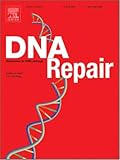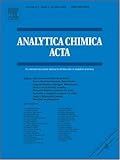|
|
Help |
| Home - Science - Saccharomyces (Books) | |
e99 Online Shopping Mall
|
|
Help |
| Home - Science - Saccharomyces (Books) | |
| Back | 21-40 of 100 | Next 20 |
click price to see details click image to enlarge click link to go to the store
| 21. Gut Flora: Escherichia Coli, Streptococcus, Lactobacillus, Clostridium Difficile, Lactobacillus Reuteri, Candida, Saccharomyces, Bacteroides | |
 | Paperback: 126
Pages
(2010-09-15)
list price: US$21.61 -- used & new: US$21.61 (price subject to change: see help) Asin: 1156081033 Canada | United Kingdom | Germany | France | Japan |
|
Editorial Review Product Description | |
| 22. Rad33, a new factor involved in nucleotide excision repair in Saccharomyces cerevisae [An article from: DNA Repair] by B.d. Dulk, S.M. Sun, M. de Ruijter, J.A. Brandsma | |
 | Digital: 9
Pages
(2006-06-10)
list price: US$10.95 -- used & new: US$10.95 (price subject to change: see help) Asin: B000RR8GES Canada | United Kingdom | Germany | France | Japan |
|
Editorial Review Product Description | |
| 23. Group of 35 offprints. Includes: LINDEGREN, & Gertrude LINDEGREN. Mendelian Inheritance of Genes Affecting Vitamin-Synthesizing in Saccharomyces. Offprint from: Annals of the Missouri Botanical Garden, 34. by Carl C. LINDEGREN | |
| Paperback:
Pages
(1947-01-01)
Asin: B000TOTV5W Canada | United Kingdom | Germany | France | Japan | |
| 24. Saccharomyces Boulardii | |
 | Paperback: 118
Pages
(2010-08-01)
list price: US$51.00 -- used & new: US$50.99 (price subject to change: see help) Asin: 6131091455 Canada | United Kingdom | Germany | France | Japan |
|
Editorial Review Product Description | |
| 25. Use of Saccharomyces cerevisiae cells immobilized on orange peel as biocatalyst for alcoholic fermentation [An article from: Bioresource Technology] by S. Plessas, A. Bekatorou, A.A. Koutinas, Soupioni | |
 | Digital:
Pages
(2007-03-01)
list price: US$10.95 -- used & new: US$10.95 (price subject to change: see help) Asin: B000PAU7M6 Canada | United Kingdom | Germany | France | Japan |
|
Editorial Review Product Description | |
| 26. Substrate specificity of the Saccharomyces cerevisiae Mus81-Mms4 endonuclease [An article from: DNA Repair] by W.M. Fricke, S.A. Bastin-Shanower, S.J. Brill | |
 | Digital:
Pages
(2005-02-03)
list price: US$10.95 -- used & new: US$10.95 (price subject to change: see help) Asin: B000RR38V4 Canada | United Kingdom | Germany | France | Japan |
|
Editorial Review Product Description | |
| 27. Efecto del consumo de cultivo de levadura Saccharomyces [cerevisiae.sup.1026] y/o selenio en pollos de engorde expuestos a bajos niveles de aflatoxina ... de la Facultad de Ciencias Veterinarias by Darwuin Arrieta, María L. Pérez-Arévalo, Carlos Gómez, Elías Ascanio, Belkis Irausquin, Gladys Molero | |
| Digital: 27
Pages
(2006-11-01)
list price: US$9.95 -- used & new: US$9.95 (price subject to change: see help) Asin: B000R9SX1W Canada | United Kingdom | Germany | France | Japan | |
|
Editorial Review Product Description | |
| 28. Repair of oxidative damage in mitochondrial DNA of Saccharomyces cerevisiae: involvement of the MSH1-dependent pathway [An article from: DNA Repair] by P. Dzierzbicki, P. Koprowski, M.U. Fikus, E. Malc | |
 | Digital:
Pages
(2004-04-01)
list price: US$8.95 -- used & new: US$8.95 (price subject to change: see help) Asin: B000RQZLZ6 Canada | United Kingdom | Germany | France | Japan |
|
Editorial Review Product Description | |
| 29. Detection of Saccharomyces cerevisiae immobilized on self-assembled monolayer (SAM) of alkanethiolate using electrochemical impedance spectroscopy [An article from: Analytica Chimica Acta] by H. Chen, C.K. Heng, P.D. Puiu, X.D. Zhou, A.C Lee | |
 | Digital:
Pages
list price: US$8.95 -- used & new: US$8.95 (price subject to change: see help) Asin: B000RR6Z7S Canada | United Kingdom | Germany | France | Japan |
|
Editorial Review Product Description | |
| 30. Effect of chaotic mixing on enhanced biological growth and implications for wastewater treatment: A test case with Saccharomyces cerevisiae [An article from: Journal of Hazardous Materials] by A.C. Bagtzoglou, N. Assaf-Anid, R. Chevray | |
 | Digital: 6
Pages
(2006-08-10)
list price: US$10.95 -- used & new: US$10.95 (price subject to change: see help) Asin: B000P6NTQG Canada | United Kingdom | Germany | France | Japan |
|
Editorial Review Product Description | |
| 31. Saccharomyces cerevisiae Ogg1 prevents poly(GT) tract instability in the mitochondrial genome [An article from: DNA Repair] by R. Vongsamphanh, J.R. Wagner, D. Ramotar | |
 | Digital:
Pages
list price: US$8.95 -- used & new: US$8.95 (price subject to change: see help) Asin: B000RR6KY6 Canada | United Kingdom | Germany | France | Japan |
|
Editorial Review Product Description | |
| 32. Heterologous Expression of Wheat Proteins in Yeast: Optimization of the Heterologous Expression and Purification of Wheat Storage Proteins in the Yeast Saccharomyces cerevisiae by Falk Matth?us | |
 | Paperback: 140
Pages
(2008-06-18)
list price: US$92.00 -- used & new: US$76.17 (price subject to change: see help) Asin: 3639040406 Canada | United Kingdom | Germany | France | Japan |
|
Editorial Review Product Description | |
| 33. Biochemical Characterization And Validation of the Yeast Saccharomyces Cerevisiae As Model System for the Function of Human Protein Tau (Acta Biomedica Lovaniensia) by Tom Vandebroek | |
 | Paperback: 134
Pages
(2006-09-30)
list price: US$92.50 -- used & new: US$89.35 (price subject to change: see help) Asin: 9058675432 Canada | United Kingdom | Germany | France | Japan |
| 34. Genetic map of Saccharomyces cerevisiae: (as of November 1984) by Robert K Mortimer | |
| Unknown Binding: 25
Pages
(1985)
Asin: B0006YTIXA Canada | United Kingdom | Germany | France | Japan | |
| 35. Nitrogen and redox metabolism in the yeast Saccharomyces cerevisiae: Impact on cellular activity and ethanol production by Eva Albers | |
 | Paperback: 92
Pages
(2010-08-13)
list price: US$63.00 -- used & new: US$62.99 (price subject to change: see help) Asin: 3639250362 Canada | United Kingdom | Germany | France | Japan |
|
Editorial Review Product Description | |
| 36. Rev1 enhances CAG.CTG repeat stability in Saccharomyces cerevisiae [An article from: DNA Repair] by N.S. Collins, S. Bhattacharyya, R.S. Lahue | |
 | Digital:
Pages
(2007-01-04)
list price: US$10.95 -- used & new: US$10.95 (price subject to change: see help) Asin: B000PDSFG8 Canada | United Kingdom | Germany | France | Japan |
|
Editorial Review Product Description | |
| 37. The Molecular and Cellular Biology of the Yeast Saccharomyces, Volume 3: Cell Cycle and Cell Biology (Cold Spring Harbor Monograph) | |
 | Paperback: 1131
Pages
(2010-05)
list price: US$81.00 -- used & new: US$76.99 (price subject to change: see help) Asin: 8796936495 Canada | United Kingdom | Germany | France | Japan |
| 38. Decolourization of azo dye methyl red by Saccharomyces cerevisiae MTCC 463 [An article from: Chemosphere] by J.P. Jadhav, G.K. Parshetti, S.D. Kalme, Govindwar | |
 | Digital:
Pages
(2007-06-01)
list price: US$4.95 -- used & new: US$4.95 (price subject to change: see help) Asin: B000PKHZ9Y Canada | United Kingdom | Germany | France | Japan |
|
Editorial Review Product Description | |
| 39. Genetic analysis of ionizing radiation-induced mutagenesis in Saccharomyces cerevisiae reveals TransLesion Synthesis (TLS) independent of PCNA K164 SUMOylation ... ubiquitination [An article from: DNA Repair] by C.C. Chen, A. Motegi, Y. Hasegawa, K. Myung, Kolod | |
 | Digital:
Pages
(2006-12-09)
list price: US$10.95 -- used & new: US$10.95 (price subject to change: see help) Asin: B000PDSQ7Q Canada | United Kingdom | Germany | France | Japan |
|
Editorial Review Product Description | |
| 40. Effects of mismatch repair and Hpr1 on transcription-stimulated mitotic recombination in the yeast Saccharomyces cerevisiae [An article from: DNA Repair] by J.A. Freedman, S. Jinks-Robertson | |
 | Digital:
Pages
(2004-11-02)
list price: US$8.95 -- used & new: US$8.95 (price subject to change: see help) Asin: B000RR3968 Canada | United Kingdom | Germany | France | Japan |
|
Editorial Review Product Description | |
| Back | 21-40 of 100 | Next 20 |